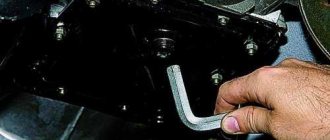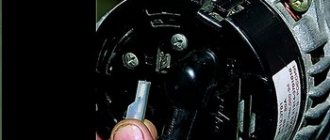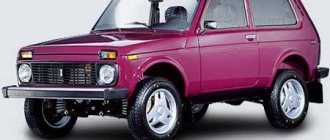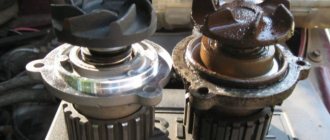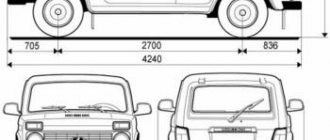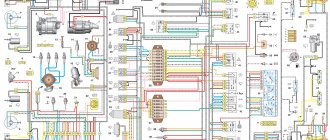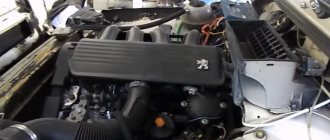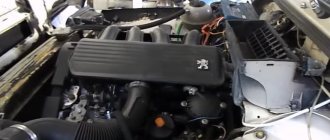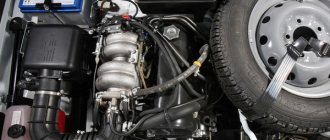40 years have already passed since this masterpiece of the Soviet automotive industry rolled off the assembly line. It was a brilliant design solution for the time. Not a single all-wheel drive vehicle in the world had such qualities as the engineers of the Volzhsky Automobile Plant endowed the Niva with. Nowadays, any modern SUV uses the same principles that were laid down in the Niva in 1977: permanent all-wheel drive, a monocoque body, spring suspension, high ground clearance and a short wheelbase.
The car began to be in demand not only in the Soviet Union, but throughout the world. As a result, the demand for various modifications for each country has increased. With the growth of popularity, the need for individuality has also grown (after all, many do not want to drive the same Niva as others). Therefore, modifications had to be made not only in relation to the engine and internal elements, but also to the body, which was also repeatedly subjected to tuning.
The number of modifications of the Niva grew every year, and at the moment it is no longer difficult to lose count. In this review, we will tell you about all the options and modifications of cars with worldwide recognition and a long history, proudly called Niva. And let's start the review, of course, with the very first Niva that came off the assembly line.
First release of Niva (VAZ-2121)
The Niva, which solemnly left the gates of the Volga Automobile Plant on April 5, 1977, laid the foundation for all subsequent modifications. The car had a short three-door wheelbase, spring suspension with an independent front axle, permanent all-wheel drive and a sealed body. All these qualities have not changed subsequently and are still used in the global automotive industry. The car's interior was more than comfortable and could compete with many foreign competitors. At that time, no one was particularly puzzled by the choice of colors, so the car was produced in a single color called “Golden Ocher”. The first Nivas were equipped with a 1.6-liter carburetor engine with a power of 80 hp, as well as a four-speed gearbox.
Compound
1. Headlight; 2. Front light; 3. Jack; 4. Radiator; 5. Windshield and headlight washer reservoir; 6. Engine; 7. Air filter; 8. Cooling system expansion tank; 9. Rechargeable battery; 10. Differential lock lever in the transfer case; 11. Gear shift lever; 12. Gear shift lever in the transfer case; 13. Steering wheel; 14. Front seat; 15. Rear seat; 16. Rear window washer reservoir; 17. Main muffler; 18. Rear bumper; 19. Rear brake; 20. Rear suspension spring; 21. Rear shock absorber; 22. Rear suspension transverse rod; 23. Longitudinal reaction rod of the rear suspension; 24. Fuel tank; 25. Rear axle; 26. Additional muffler; 27. Rear driveshaft; 28. Brake fluid reservoir; 29. Clutch fluid reservoir; 30. Transfer case; 31. Clutch pedal; 32. Brake pedal; 33. Front brake; 34. Front suspension spring; 35. Front axle; 36. Side turn signal; 37. Front bumper.
The engine, clutch housing and gearbox are interconnected and form a power unit, which is mounted on the car at three points on rubber cushions.
The engine is a four-stroke, carburetor, in-line, with an overhead camshaft. Compared to the VAZ-2121, the engine power has been increased, making it better able to adapt to load changes.
The most economical Niva (VAZ-21211)
This model was developed specifically for export to countries where the cost of gasoline forced a choice in favor of more economical cars. The engine displacement of this modification was 1.3 liters with a power of 69 horsepower, which could not but affect the dynamic characteristics and torque when driving off-road. As a result of the weak engine and high weight, the cross-country ability decreased, which was unacceptable for the Niva. All this became the reason that there was no sufficient demand for this modification of the Niva. But despite this, cars were exported abroad in small quantities, mainly to Europe.
Basic systems
Engine lubrication system – with full-flow oil filter.
The cooling system is liquid, closed type. The system includes a body heater, which receives fluid from the cylinder head and is discharged to the pump. The coolant is a special one with a low freezing point and a high boiling point. The radiator is aluminum with better heat transfer characteristics and is more technologically advanced than the brass radiator of the VAZ-2121.
The power system includes an air filter, fuel tank, fuel pump and carburetor. The fuel tank is located under the rear seat. The carburetor is equipped with a high-efficiency dry-type air filter with a paper filter element.
The carburetor is installed as a “Solex” type, similar to that used on VAZ 2108 - 2109 cars. This carburetor, in combination with a contactless ignition system, reduces fuel consumption.
The most powerful Niva (Lada 4×4 Niva Poch)
This modification was the product of the efforts of French engineers, whose task was to modernize the Niva for rally sports events. And, I must say, they did a good job - after all, this model even managed to take part in the famous Paris-Dakar. The Niva Poch was equipped with a lightweight non-metallic hood and wheels from Porche. But the most interesting thing was located under the hood - instead of 4 cylinders, there were 6 rather large cylinders, the total working volume of which was 3.5 liters. Moreover, the power they produced was 310 “horses,” which was a very impressive result for those years. 8 of these models were built.
Right-handed Niva (VAZ-21212)
There was also an export version for countries with left-hand traffic. It was the only Soviet car that was exported to Japan. Before and after this delivery (one small batch was delivered), no Soviet cars were observed on the territory of this country. Most copies of this model were exported to England. Nowadays, it is already difficult to find a “right-hand drive Niva” - unless among connoisseurs of retro cars. The technical characteristics of this model did not differ from the basic version. The same 1.6-liter engine and 4-speed manual transmission were used.
What kind of Shniva is it without protection... — logbook of the 2012 Chevrolet Niva PILIGRIM on DRIVE2
The door seals are thicker, and optional roof rails are available, as are body-colored door handles and mirrors. We revised the sound insulation and the design of the wheel rims. Chevy Niva is one of the few cars on the Russian market that does not have an airbag in the basic version.
However, starting with the GL configuration, both the driver and front passenger have it, and they also have belt pretensioners. The only active safety system is ABS. The parts are very simple in shape - it will not be difficult to edit.
Improving
A well-thought-out and laconic fastening system - to standard places using a pair of durable steel beams. Reliable mortgages, with intermediate galvanized washers.
Ground clearance is reduced by only 15 mm. I see only one minus, and some Chevrolet Niva owners agree with me - the nuts of the axles of the lower arms of the front suspension remain open.
This is because the protection is relatively narrow. The rear view mirror noticeably distorts the view, but no longer vibrates, since now it is not attached to the body, as before, but is glued to the glass. The interior mirror has also been replaced. I just wonder why such a small thing could not have been done earlier? The knobs of the gearbox and transfer case levers are also new.
They look stylish and fit comfortably in the hand. But why does the transfer case lever knob rotate freely around its axis?
Floating Niva (VAZ-2122)
This model was developed by order of the Ministry of Defense exclusively to equip the USSR army. The same VAZ-2121 was used as a base, the metal roof of which was replaced with a fabric awning. The car had 2 gas tanks and was equipped with a 1.3 liter engine. The cooling system has been seriously modified to allow less water and more air to enter the engine compartment. The bumpers were designed so that any military vehicle could push the Niva without damage if it got stuck in mud or water. In addition, a winch, usually used on UAZs, was added to the car. The amphibian developed a speed of just over 4 km/h when moving through water.
Lada 4x4 3D 2000 - do it yourself
Cars for sale
Lada 4×4 2121 Niva, 2019
Lada 4×4 2121 Niva, 2016
Lada 4×4 2121 Niva, 2014
Lada 4×4 2121 Niva, 1997
Diesel Niva (VAZ-21215)
Perhaps many will be surprised now, but diesel engines were actually installed on Nivas. This happened at the end of the second and beginning of the third millennium. This version of the Niva was not designed for the domestic market and was produced exclusively for export. Diesel engines with the index XUD9SD were borrowed from the French auto giant Peugeot. In addition to the engine, the car also received a number of changes to the body. A lot of plastic was added on top of the usual body, and the rear door providing access to the trunk was extended to the level of the bumper to ensure comfortable loading. Due to the lengthening of the door, the rear lights had to be made vertical.
Hydrogen Niva (VAZ-2131 "Antel")
The hydrogen elements in this car created electricity, which then acted on the electric motors. As you understand, the classification according to environmental standards allowed the car to be used in absolutely any country, because this car did not make noise and did not consume the usual fuel. Unfortunately, this model never entered mass production. The car was presented in 2001, and that’s where its story ended – only photographs remained. Let's hope that in the near future the domestic manufacturer will begin mass-producing cars with similar installations.
Electrical equipment
The electrical equipment of cars is made according to a single-wire circuit, in which the negative terminals of sources and consumers of electricity are connected to ground, which serves as the second wire. The current sources in the system are an alternating current generator with a built-in semiconductor rectifier and a microelectronic voltage regulator and a 6ST-55 lead-acid battery. To start the engine, a starter 35.3708 is used.
Read also: How to quickly learn to drive a car
Collector Niva (VAZ-2121B)
This version of the Niva was created in 1992, since a consequence of perestroika was the beginning of the formation of a new banking system, which in turn created a demand for this type of car. Only a few enterprises operating in the banking sector could afford to purchase expensive armored foreign cars. Therefore, the Togliatti giant took upon itself the function of supplying Russian banks with armored Nivas. The body became bulletproof, and in the corners of the side windows there were special loopholes designed for defensive actions in the event of an attack by intruders, of whom, by the way, there were quite a few in the 90s.
Commercial Niva (VAZ-2121F)
This Niva was developed specifically for export to foreign countries, where this type of body was in great demand. The rear of the car was actually turned into a cargo compartment - the glass was replaced with metal inserts, and the back row of seats was simply absent. Inside the van there were cargo holdfasts. In addition, for safety, special crossbars were installed in the cars to protect the driver and passenger from the load shifting forward during braking. In general, it turned out to be a good option, but this Niva noticeably loses in the competition with many similar cars - this is due to the fact that commercial vehicles do not need its off-road qualities, which only add to the cost of operation and maintenance.
Bottom repair without welding
Niva flooring can be repaired without a welding machine. This is done in two ways:
- Installing a sheet metal patch. Rivets are used to secure them.
- Application of composite materials. They contain polymer resins, reinforcing filling and a curing reaction accelerator. This material restores the mechanical strength of the area and reduces the risk of rapid rust.
Installing patches is suitable for large-scale damage. If corrosion has pinpointed the bottom, it is easier to seal the hole in the Niva with a special mixture.
Niva convertible (Lada Niva Cabrio)
German engineering minds were used to create this modification. And the first thing these minds came up with was to completely cut off the roof. That's right - a UAZ with a tarpaulin, why not Niva repeat this experience. The wheel arches were widened and protruded beautifully to the sides. The front arches smoothly flowed into the front bumper, and the rear lights “moved” into the body of the rear bumper - all this added many advantages to the appearance. Since the Niva’s body is load-bearing, the problem of its deformation had to be solved by integrating a metal pipe into the base of the body. So now you know that some Nivas had an integrated frame.
Niva for travel (VAZ-2121 “Auviga”)
There was also a modification for travelers, which consisted of two independent parts - the front part of the car was a pickup truck made from a short-wheelbase Niva. On top of this pickup, the second part, which actually consisted of a room with windows and a door, was laid and tightened with two fasteners. This part had one wheel axle, absolutely identical to the wheelbase of any other Niva. Since the car was quite large, large mirrors were screwed onto the front fenders for safety. About 2 such models were produced. Due to the collapse of the USSR, production of this Niva ceased.
Transmission
The clutch is a single-plate, dry clutch with a diaphragm pressure spring and a hydraulic release drive. Gearbox – mechanical, three-way, five-speed. The transfer case is a two-stage three-shaft with an interaxle lockable bevel two-satellite differential.
The intermediate driveshaft connecting the gearbox to the transfer case has an elastic coupling and a constant-velocity universal joint. The cardan shafts of the rear and front axles at the ends with cardan joints on needle bearings with grease fittings transmit torque from the transfer case to the main gears of the axles.
The main gears of the front and rear axles consist of a pair of bevel gears with spiral teeth of hypoid engagement. Differentials - conical two-satellite.
Beach Niva (VAZ-212183 “Landole”)
The model turned out to be extremely noticeable, because the body is noticeably modified to suit the buggy style: there are no doors, instead of a roof there is a curved structure made of metal pipes, and there is a kangaroo guard on the front of the car. The car is also equipped with power steering. Among other things, a lot of different body kits have been added (including an additional air intake on the surface of the hood) and plastic lining throughout the body. This car is intended exclusively for the summer season. If the car is reduced by one and a half times, you will get a full-fledged ATV with a round steering wheel and a small roof from the rain (or, again, a buggy).
Thanks for subscribing!
Interior
There are four seats inside, the first row will be heated. The center console and sound insulation have been improved. The mirrors were also modified, and an air conditioner was installed to maintain an optimal microclimate. According to the developers, the multimedia system will be simple, but with a set of all the necessary capabilities.
We can conclude that the new Niva 4x4 model will have a classic interior with minor modifications, but considering that the car is designed for off-road driving where the main requirement is conductivity, then luxury is not needed here at all.
As for the prices for the new crossover, they are unknown, and most likely they will be announced just before the release, but according to preliminary data, the price will remain the same and will start from 400 thousand rubles.
Spanish Niva (Lada Niva iKRA)
The Lada Niva Ikra was developed specifically for export to Spain. Like most domestic cars sold abroad, Ikra had a rather interesting appearance. The bumpers were connected to each other by long gray body kits of an unusual shape - it looked very good, especially in comparison with standard Nivas. Additional engine cooling was installed on the surface of the hood in the form of an elegant oncoming air intake. The rear part of the car was not without body kits, where plastic elements were installed to create a streamlined aerodynamic appearance.
Test Drive
Timeless motives
At the time it went on sale, Lada Niva was one of the most beautiful cars of its time. Now square body shapes, round lighting optics and laconic bumpers are already classics that evoke a feeling of pleasant nostalgia.
However, the creators calculated everything perfectly. Short body overhangs and non-protruding bumpers provide outstanding geometric cross-country ability. A minimum of plastic parts reduces the risk of damage during extreme use, and the ground clearance of 220 millimeters makes it possible to navigate deep ruts and mountainous terrain.
Nothing extra
The interior is simple but functional. The instrument panel with analog scales and a tachometer is perfectly readable due to large digitization, and is also quite informative. On the center console there is a climate system unit in the form of sliders, as well as control keys for light and rear window heating - they are organized compactly and there are no problems with their use. Ergonomic miscalculations include a pedal assembly shifted to the right, as well as a significant distance to the manual transmission lever.
The front seats have no profile. However, they are comfortable to sit on due to optimal rigidity and the presence of lateral support rollers. But the back seat is cramped in all directions, even with a height of 165 centimeters. The initial volume of the luggage compartment is 265 millimeters. When the second row seats are folded, the figure increases to 585 liters.
Subspecialist
You can drive the VAZ 2121 quite confidently on an asphalt highway. The 1.7-liter fuel-injected engine (83 horsepower) pulls confidently at low and medium speeds, and the optimally selected transmission ratio makes it possible to accelerate well at speeds of up to 70 kilometers per hour. At the same time, the clarity of gear shifts is mediocre, and the moves of the manual gearbox lever are very sweeping.
The steering with low sensitivity is not very informative, and the steering wheel itself rotates with noticeable effort. The latter causes discomfort when maneuvering in city conditions. At high speeds, the car yaws along the road, as well as significant rocking.
The main disadvantages of driving comfort are vibrations and annoying hum from the engine and transmission. Also, above 80 kilometers per hour, aerodynamic noise begins to appear, which forces you to seriously raise your tone when communicating with the rest of the occupants of the cabin. In a word, lovers of long-distance travel will not be delighted with the VAZ 2121.
But everything changes - you just have to drive onto a country road. Having felt its native elements, the Niva begins to surprise the driver with an energy-intensive suspension that provides excellent ride comfort, as well as absolute immunity to road irregularities. At the same time, the transfer transmission coupled with all-wheel drive allows you to successfully get out of sticky mud, clay or sand.
Californian Niva (Lada Niva California)
This is the German version of the Niva, looking at which Niva admirers “drool.” What is its peculiarity? Brilliant design and unique sunroof. There is something visible in the design that is close to the standard appearance of this car. Beautifully drawn lines and a two-tone body with a prominent roof complement each other perfectly - the touches of a professional designer are immediately visible. But the main feature is the huge fabric sunroof, which when open makes the car look like something close to a convertible. ATS wheels are also very original and perfectly complement the above advantages. The interior is equipped with comfortable seats and a steering wheel.
Sports Niva (Lada Gorbi)
It’s quite difficult to call this miracle of design a Niva at all, since the body has been redesigned beyond recognition. The main body material is plastic, the shapes of which have absolutely nothing in common with the shapes of the usual Niva body. These shapes were created by German industrial designer Luigi Colani, who loves to experiment with aerodynamics. As a result, it turns out that there is only one part left from the Niva and this car - the chassis. The car was produced in one copy.
Owner reviews: what are the pros and cons of the model?
VAZ 2121 is deeply loved all over the world. Legends are made about this car and it is cultivated. Practice has shown that the Russian all-terrain vehicle has a reliable chassis that can withstand extreme use on a wide variety of roads and terrain.
In addition, the model’s high maintainability is also valued - some components and assemblies can be repaired literally in an open field. A minimum of electronic systems guarantee trouble-free operation of the vehicle in harsh climates.
The disadvantages include the low resistance of the body to corrosion. And yet, many criticize the Niva for its mediocre acoustic comfort, which makes long trips on it unbearable. The owners are trying in every possible way to improve this design flaw and install additional sound insulation. Detailed information about this is presented in numerous articles and videos on the Internet.
Okhotnichya Niva (Lada 4x4 “Lynx”)
This model is designed specifically for use in Russian forests and fields. The car's chassis was modernized - suspension travel and ground clearance were increased. Basic vehicles are equipped with all-terrain tires, power steering and an electrical package that includes power windows and heated mirrors. The vehicle is successfully used by hunters and fishermen, mushroom pickers and gardeners, as well as many agricultural enterprises that need to move employees and small loads on bad roads.
see also
Comments 19
thanks for the advice
Please help if you know. Why does my VAZ-2121 turn more to the right and less to the left? Maybe some lever lengths?
And while driving it doesn’t pull in any direction? And so, offhand, here we need to reduce the left steering lever by an equal length and increase the right one. In this case, the steering wheel should turn. Well, the steering gear itself, although its travel is limited by the travel of the rods. Something like this.
Please help if you know. Why does my VAZ-2121 turn more to the right and less to the left? Maybe some lever lengths?
The bipod of the steering column is not in the center. The treatment is as follows: you turn the steering wheel all the way to the left, counting, then to the right, then you find the middle. The middle is the straight position of the column. In this position, you adjust the steering rods so that the wheels are straight, the toe is 2-4 mm. After unscrew the steering wheel, move it according to movement, tighten it, that's it
Niva is the first development of AvtoVAZ, completed entirely independently. Niva is an all-wheel drive off-road passenger car. Its technical characteristics and design features (permanent all-wheel drive, significant ground clearance, small body overhangs) allow the vehicle to be used in addition to the paved road network also in off-road conditions and on terrain with complex surface topography. The car's outstanding all-terrain qualities have been repeatedly tested and confirmed. In all extreme situations, Niva behaves predictably, confidently and purposefully. Functionally, the Niva is quite suitable for transporting goods. With the rear seat folded down, trunk volume increases significantly.
VAZ-21213 and VAZ-21214 cars are comfortable, high-speed, compact, all-wheel drive off-road passenger cars designed for transporting passengers and cargo on roads with all types of surfaces and dirt roads. The cars combine the high cross-country ability of an all-terrain vehicle with all-wheel drive with the convenience, comfort, dynamics and speed qualities of a modern passenger car.
Urban Niva (Lada 4x4 “Urban”)
One of the latest new products is the Lada 4x4 Urban model, which is currently produced by AvtoVAZ. External features of this model are light tuning of external body elements (modified bumper and radiator grille) and alloy wheels with a diameter of 16 inches. In addition, the car is equipped with electric windows, heated power mirrors, heated seats and the long-awaited air conditioning. The manufacturer offers 9 color options in different shades. The engine and manual transmission are installed in a single version each. There is no more budget SUV with zero mileage, because the cost of the Niva Urban at the beginning of April 2022 is just over half a million rubles.
Specifications
Are common
| Modifications | 1.7 83 hp petrol MT |
| Production year: | 2018 — |
| Brand country | Russia |
| Country of assembly | Russia |
| type of drive | 4x4 |
| Guarantee | 36 months or 50,000 km |
Dynamic characteristics: | |
| Acceleration to 100 km/h | 18 s |
| Maximum speed, km/h | 137 |
Fuel consumption (l): | |
| City | — |
| Route | — |
| Average | 12 |
| Fuel tank volume, liters | 42 |
Engine | |
| Motor type | petrol |
| Brand | VAZ-21214 |
| Power | 83 |
| Torque | 129 |
| Compression ratio | |
| Fuel used | AI-95 |
| Boost type | No |
Dimensions and weight | |
| Length mm | 3740 |
| Width mm | 1730 |
| Height mm | 1900 |
| Wheelbase mm | 2200 |
| Ground clearance, mm | 240 |
| Trunk volume, liters | 265/585 |
| Vehicle weight, kg | 1285 |
Extended Niva
Most of the models listed above have an extended five-door version. The first extended Niva, which created a lot of discussions among car enthusiasts, was the Niva 2131 - all other attempts to lengthen the Niva had not been successful. Despite the fact that the length of the body negatively affected off-road and dynamic qualities, it quickly gained popularity among domestic motorists. Probably the reason for this was that such a body is more comfortable for passengers and more spacious for various cargoes - this is quite the case, because the short-wheelbase Niva has very little space for rear passengers and a very small trunk.
Welding work
The first step is to remove rusty metal and corrosion. It is advisable to carry out this work with a grinder. Hard-to-reach places are cleaned using a gas welding machine. Then the metal patches are cut out. This is done with special scissors. This way you can make correct, even workpieces without torn edges.
It will be easier for two people to weld a new floor, since you will have to fix the patch and weld it at the same time. Basic rules for welding the bottom:
- The patch is stuck at 3-4 points, and then completely scalded.
- Short sutures are used to correct small defects. Length – 3 cm.
- The patch is applied as tightly as possible. In gaps, corrosion quickly forms again.
- To increase the strength of the seams, they are hammered.
